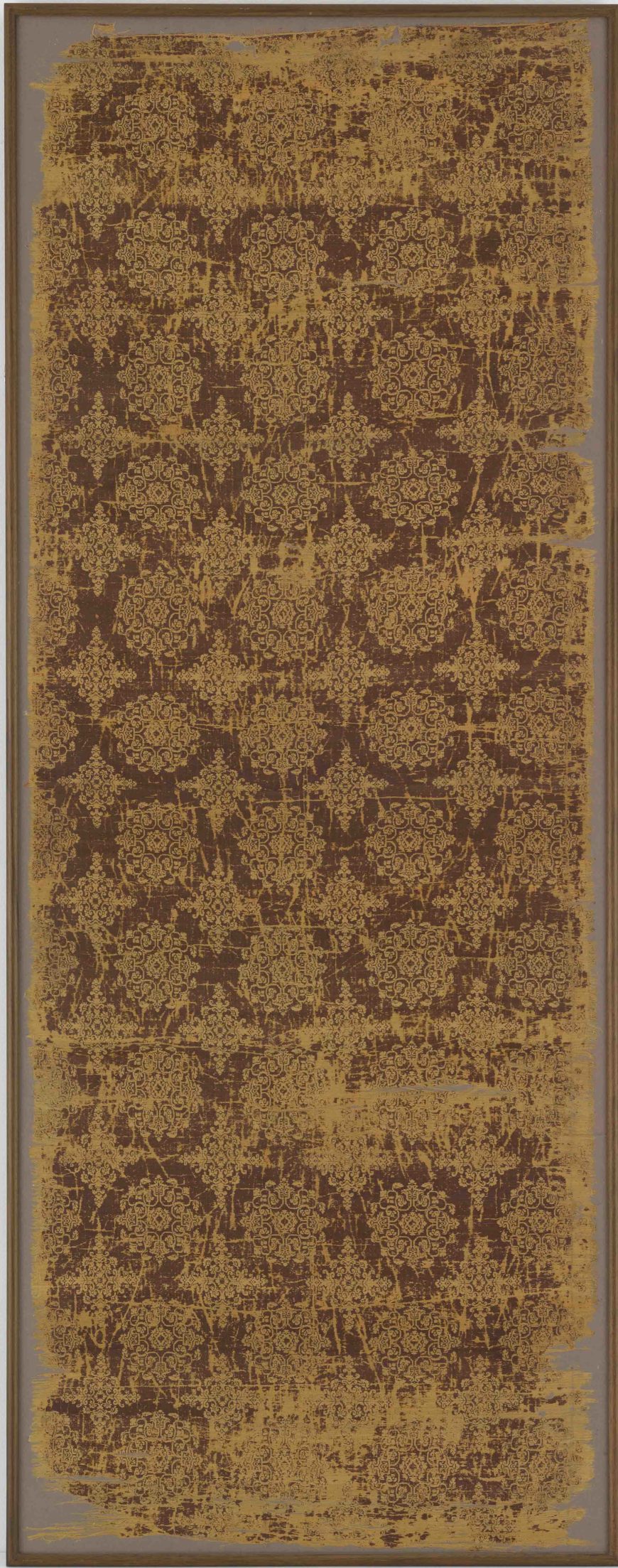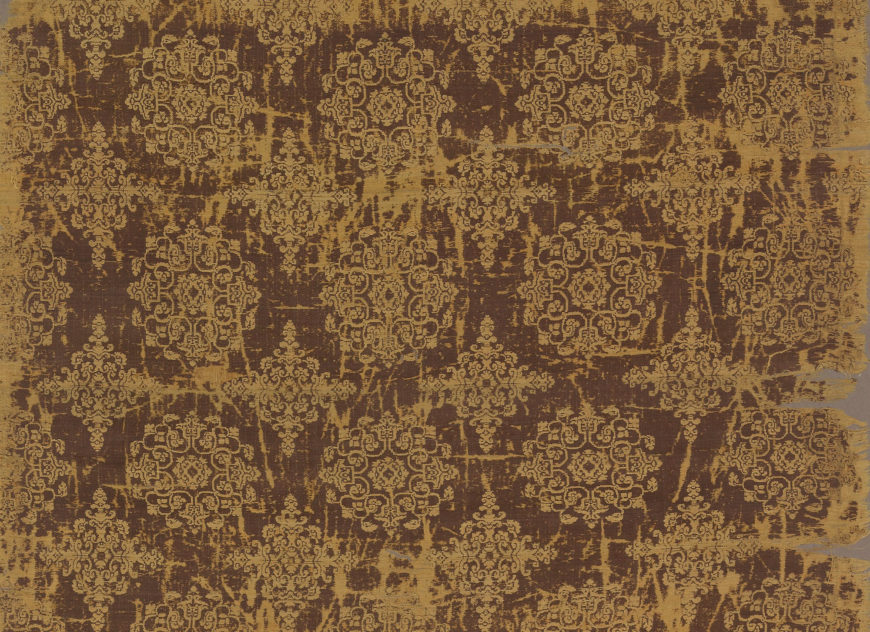
Textile with floral medallions and lozenges, mid-Tang dynasty, first half of the 8th century, brocade (jin): woven silk (weft-faced compound twill), China, 150.1 high x 59.3 cm (Freer Gallery of Art, Smithsonian, Washington, DC: Gift of Charles Lang Freer, F1911.597a-b)
This silk brocade is rectangular in shape. It is almost five feet long and two feet wide, which is surprisingly large. Only one of the vertical edges is a selvage, so we know the loom would have been over two feet wide. Considering that the textile was made more than one thousand years ago, its state of preservation is remarkable. It is decorated with yellow patterns on a dark purple background. Lines of round floral medallions alternate with lines of diamond designs, or lozenges. Both patterns are formed by horizontal threads (wefts). This differs from earlier Chinese brocades whose patterns are formed by vertical threads (warps).
In the early seventh century, weft-pattern weaves were introduced from Central Asia to China via the Silk Road. This new weaving technique transformed Chinese weaving because it made it easier to add color where it was desired. Since designs develop from the rows of weft (crosswise) threads, rather than the pre-placed warp (lengthwise) yarns, textile craftsmen had more freedom to make more colorful fabrics with complex designs. This technical innovation eventually led to the greatest era of Silk Road textile production. Chinese fabrics—typically silks—were traded widely and became one of the most popular goods on the Silk Road. Due to this popularity, they have been preserved in Christian cathedrals in western Europe as well as in Buddhist temples in Japan. Scholars suspect that this textile piece was made in China by Tang weavers who were inspired by Sogdian designs that were very popular at the time.

Detail of textile with floral medallions and lozenges, mid-Tang dynasty, first half of the 8th century, brocade (jin): woven silk (weft-faced compound twill), China, 150.1 high x 59.3 cm (Freer Gallery of Art, Smithsonian, Washington, DC: Gift of Charles Lang Freer, F1911.597a-b)
Charles Lang Freer bought this textile in Nara, Japan. Similar textiles with identical patterns are found in the Shōsō-in, a mid-eighth-century storehouse of Japanese imperial treasures in Nara. That makes us suppose that it might have once belonged to the Shōsō-in as well, or perhaps treasured in a nearby temple. Given the textile’s current condition, it is almost impossible for us to tell its original function. Perhaps it arrived as a bolt, or roll, of cloth, a diplomatic gift from China to Japan.
 This resource was developed for Teaching China with the Smithsonian, made possible by the generous support of the Freeman Foundation
This resource was developed for Teaching China with the Smithsonian, made possible by the generous support of the Freeman Foundation
For the classroom
Discussion questions:
- Why was silk such a precious commodity of trade at the time this object was made? Research possible reasons why silk became a desired commodity.
- What are the desired commodities of trade in today’s world? What are the popular exports from China now?
- Use the zoom feature on the online object record here to closely examine the floral patterns on this textile. Try sketching the patterns found here on graph paper. What examples of symmetry can you find?




